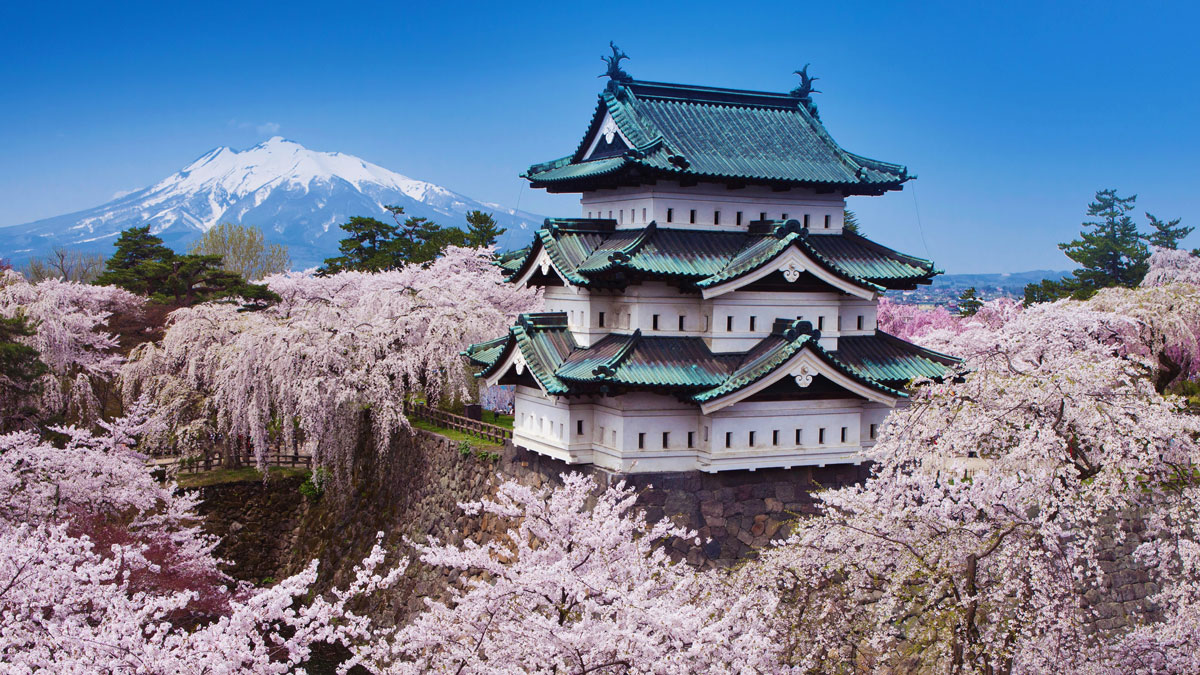Three great places to fete the nation’s favorite flower-Cherry Blossoms
Images of cherry blossoms endure in Japanese culture and grace everything from fabrics and home decor to modern art, anime, and literature. But there’s nothing quite like seeing Japan’s enchanting cherry trees in full bloom. The delicate pink blossoms – or sakura as they’re called in Japanese – are the unofficial flower of Japan, and for just a few ephemeral weeks each year, between late March and early May, they appear from south to north across the 2,400-mile country. The flowers’ peak lasts for only about two weeks in each area, which is why they’ve become symbolic of the brevity of life. But their arrival also signals spring’s optimism and renewal.
Japanese haiku master Kobayashi Issa (1763-1828) wrote, “In the cherry blossom’s shade / there’s no such thing / as a stranger,” which is evident when friends and family meet up for hanami (flower viewing) beneath fluttering petals all across the 6,800-island country. It’s rumored that the Japanese aristocracy began the custom of strolling beneath the cherry blossoms in the eighth century. Today it’s a delightful way for anyone to celebrate the season, along with picnics, parties, and festivals. Here are three notable regions where you can tap into Japan’s beautiful national obsession, as well as other unique local experiences, next spring.

Take a meditation lesson at Kencho-ji Temple, Kamakura, Japan
Japan Late March through Early April: Kamakura in Kanagawa Prefecture
For a side of Zen with your blossom spotting, make the day trip from Tokyo to Kamakura. Less than an hour’s drive south, the coastal city is home to the roughly 40-foot-high bronze Great Buddha, as well as Japan’s second-largest seated Buddha (the largest is in Nara), and is known for its dozens of architecturally impressive Shinto shrines and Buddhist temples.
Constructed in 1253, Kencho-ji is considered one of the city’s most important temples. There is a tunnel of cherry blossoms that points the way to its gate. Kamakura’s Tsurugaoka Hachimangu shrine, where cherry trees line the Genpei pond, makes for another scenic stop – a perfect setting to capture the reflections of dangling branches and fallen pink petals, known as hana-jutan (carpet of cherry blossoms), that shift with the wind in ever-changing patterns.
If you’re spending more than a day in this seaside resort city (highly recommended), book a room at a local ryokan. Venture to nearby Hakone, one of Japan’s most popular hot springs destinations, for a relaxing soak; check out Kamakura’s sandy beaches, popular during summer months; or try seated meditation (zazen) – numerous temples, including Kencho-ji, offer lessons, often in English.

Mount Yoshino in bloom
Japan Early to Mid-April: Mount Yoshino in Nara Prefecture
Just 22 miles south of Kyoto and about 17 miles east of Osaka, Nara is a must for history buffs. As the country’s ancient former religious and political capital, Nara is home to some of Japan’s oldest temples and shrines. Mount Yoshino is one of the country’s top spots to take in cherry blossom season. And it is less than an hour by car from town! Here there are 30,000 cherry trees of many different varieties that blanket the mountain and surrounding town in blush-colored blooms.
The mountain’s Shimo Senbon (lower), Naka Senbon (middle), and Kami Senbon (upper) areas each offer different sites. A path through the surrounding town provides a chance to browse local shops and restaurants as you ascend. Tucked among the trees along the way are Yoshimizu-jinja Shrine and Kinpusen-ji Temple, famous for their 1,300-year-old blue-skinned Zao Gongen statues. Sweeping vistas of the flower-carpeted landscape are on the upper mountain. Should you be a bit late to catch their peak, climb to Oku Senbon, near the mountain’s top, where trees bloom a little later due to the high altitude.
Back in Nara, swing by Nakatanidou, where you can witness the traditional art of making mochi at the city’s most famous (and often crowded) shop. Then head to Nara Park, a 1,600-acre garden known for its natural beauty, free-roaming tame deer, and historic temples. The UNESCO World-Heritage-recognized Todai-ji temple is in Nara Park and home to Japan’s largest seated Buddha.

Enjoy sakura mochi during cherry blossom season in Japan
Japan Late April: Hirosaki Castle in Aomori Prefecture
Located in Aomori, Hirosaki Castle and Park are one of the country’s best late-season viewing spots. Aomori is in the northernmost prefecture on Japan’s main island, Honshu. This picturesque scene gets a boost from the backdrop of snowcapped Mount Iwaki in the distance. Hirosaki Castle is 400-years-old and one of Japan’s most iconic. Come late April, the castle grounds look frosted with the blooms of some 2,600 trees.
An estimated 2 million revelers arrive each year to enjoy the hanami, and the annual Cherry Blossom Festival, typically held between April 23rd and May 5th, invites them to paddle rowboats in the castle moat, play traditional games such as kingyo-sukui (goldfish scooping), and savor seasonal treats like sakura mochi, a sweet, pink rice cake filled with red bean paste and wrapped in salted cherry leaves. At night, the illuminated trees and falling petals are entrancing.
You can get to Aomori easily from Tokyo. It is just an hour’s flight away or a three-hour zip on Japan’s famous bullet train. Surrounded by water on three sides the prefecture is known for its seafood, sake, apples, and verdant nature. Save time to lace up your shoes and trek some of the 621-plus-mile Michinoku Coastal Trail, Japan’s longest hiking path.
Interested in other blogs about Japan? Click to learn about Kanazawa: Geishas, Gardens, Gold & More! or Naoshima: Art Island In Japan.
Need a perfectly designed itinerary to Japan? Click here to schedule and we’ll chat soon!




